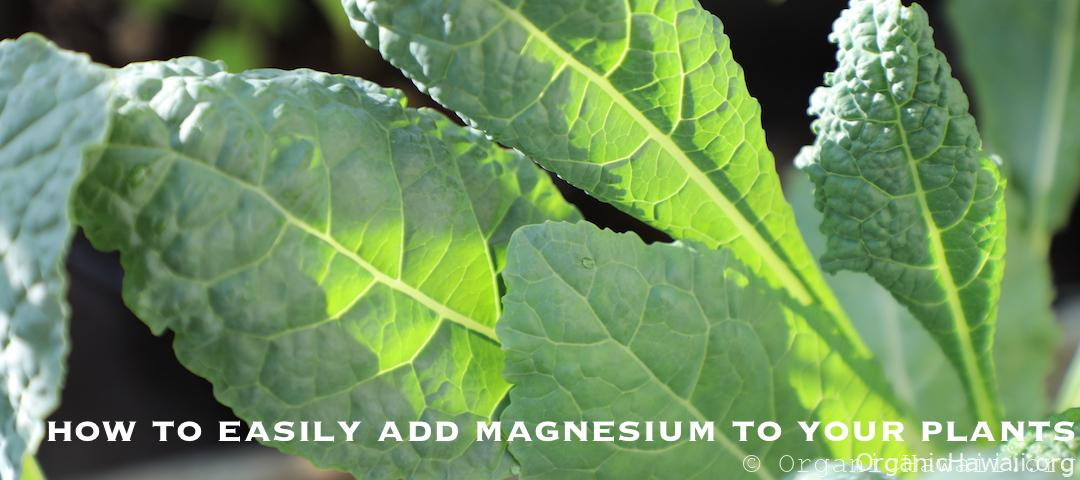As a gardener ensuring your plants get proper nutrition is key to helping them thrive. While nitrogen phosphorus, and potassium get a lot of attention, magnesium is another important mineral needed for healthy plant growth. In fact, magnesium plays several crucial roles. But soils can become depleted in magnesium over time. That’s where using magnesium supplements from tablets can help give your plants a boost.
In this complete guide, we’ll cover everything you need to know about using magnesium tablets from the pharmacy or vitamin aisle to fertilize your garden plants and correct deficiencies.
Why Plants Need Magnesium
Magnesium serves numerous important functions in plants:
-
It’s a key component of chlorophyll, the green pigment essential for photosynthesis. Without adequate magnesium, plants cannot properly carry out photosynthesis.
-
It helps activate many enzymes plants need for growth and metabolism.
-
It aids in the uptake and transport of other nutrients like phosphorus.
-
It contributes to the structural development of proteins, plant DNA, and RNA.
So magnesium facilitates overall growth, development, photosynthesis, and nutrient utilization in plants.
Signs of Magnesium Deficiency in Plants
Plants lacking sufficient magnesium will start to show some clear deficiency symptoms including:
-
Interveinal chlorosis – yellowing of tissue between leaf veins while veins stay green
-
Reddening of leaf tips and margins, later turning brown
-
Stunted growth and smaller leaves
-
Leaves may curl or cup downwards
-
Poor flowering and fruit production
-
Increased susceptibility to diseases and stress
So be on the lookout for these signs, as they indicate magnesium levels need a boost.
Why Use Magnesium Supplements on Plants?
While magnesium occurs naturally in soil, levels can become depleted over time, especially with repeated crops grown. Sandy, acidic, or heavily leached soils are also prone to being low in magnesium.
That’s where magnesium supplements can be very helpful:
-
Convenient, affordable source of magnesium.
-
Allows precise control over magnesium levels applied.
-
Can quickly correct magnesium deficiencies.
-
Useful for container plants susceptible to mineral depletion.
-
An organic gardening option.
Choosing a Magnesium Supplement
When shopping for a magnesium supplement, look for 100% magnesium oxide or magnesium citrate formulas, without added fillers or flavors.
Powdered forms are ideal for easy mixing and application. Tablets can also be crushed into powder.
Look for highly water soluble magnesium to ensure it dissolves for plant uptake. And choose a higher magnesium percentage.
How to Apply Magnesium Tablets to Plants
Once you have a suitable magnesium supplement, application is straightforward:
-
Dissolve the powder (or crushed tablets) in water at a ratio of 1 teaspoon per gallon. Shake well to dissolve.
-
Optionally acidify the water slightly with lemon juice or vitamin C which aids dissolution.
-
Use the magnesium solution to water plants as usual, either in gardens or containers.
-
Repeat applications every 1-2 weeks to maintain adequate levels.
-
Avoid overdosing, as too much magnesium harms plants.
-
Combine with balanced fertilizer for comprehensive nutrition.
Using Magnesium Tablets in Gardens and Containers
Magnesium tablets can benefit both in-ground gardens and containers:
-
For gardens, mix into irrigation water or use a watering can. Tomatoes, peppers, and brassicas are magnesium-loving plants.
-
Container plants are prone to magnesium deficiency, so use dissolved tablets whenever watering containers.
-
For lawns, apply uniformly with a tank sprayer to improve grass strength and color.
-
For hydroponics, add to nutrient solutions to precisely manage magnesium levels.
Key Tips for Using Magnesium Supplements
Follow these tips for success with magnesium tablets:
-
Read and follow label directions carefully.
-
Test soil first to determine if magnesium is deficient.
-
Apply at plant roots and leaves for rapid absorption.
-
Use more for heavy magnesium feeders like tomatoes.
-
Avoid applying to stressed plants.
-
Don’t exceed 5-10 ppm magnesium concentration in solutions.
-
Combine with nitrogen, phosphorus, and other nutrients.
-
Monitor plant response and adjust rates accordingly.
Frequently Asked Questions
Are magnesium tablets safe for all plants?
Magnesium is safe for most edible and ornamental plants. But get guidance before applying to acid-loving plants like azaleas that prefer lower magnesium levels.
When should I apply magnesium tablets to plants?
Early spring through the active growing season are best times. Avoid dormancy or times of stress.
How often should I use magnesium tablets?
Most plants need magnesium every 1-2 weeks. Monitor for deficiency signs and apply more or less frequently based on plant response.
What’s the best way to use magnesium on container plants?
Dissolve the recommended amount of magnesium powder or crushed tablets in water. Use this magnesium-rich water whenever you irrigate containers.
Can I use Epsom salts instead of magnesium tablets?
Yes! Epsom salt (magnesium sulfate) also provides magnesium in a water-soluble form that plants can use. Follow similar mixing and application guidelines.
Final Thoughts
With their many crucial roles in plant growth and metabolism, ensuring adequate magnesium is important for crop health and yield. While naturally present in soil, magnesium can become depleted. That’s where supplemental magnesium from tablets offers an easy, affordable way to correct deficiencies.
Follow this complete guide to successfully use magnesium supplements from your medicine cabinet or pharmacy to give your garden plants a nutritional boost. The small investment pays dividends through healthier, more productive plants.

